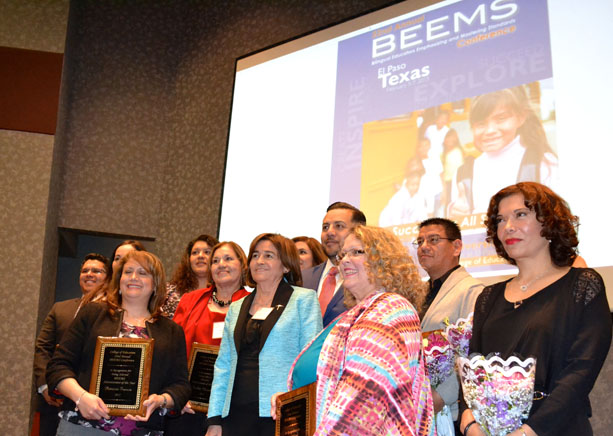EL PASO — When Luis F. Cruz walked into Baldwin Park High School as principal in 2005 he realized he had entered a toxic environment where teachers blamed parents for their students failures, that only students who spoke English and knew their arithmetic were encouraged to succeed.
He knew that culture had to a change, that graduation rates had to be valued above athletics and he demanded that his teachers start saving lives. “Did you come prepared to save lives today? Because we are all in the business of saving lives,” he told them. According to Cruz, a study confirmed that people that finish high school live ten years more then people with a lower level of education.
Cruz was the first public speaker at a recent conference here of The Bilingual Educators Emphasizing Multicultural Settings (BEEMS) organized by The University of Texas at El Paso (UTEP). BEEMS celebrated 22 years of offering workshops with the goal of enhancing two-way bilingual education at all school levels.
Some 500 teachers from K-12 grades from different regions came to a three-day event conference learn about the newest technology and best practices for teaching dual-language education. There were participants from the United States, Mexico, El Salvador, Guatemala, Honduras and the Dominican Republic.
Dr. Josefina V. Tinajero, Professor and Conference Chair from BEEMS, described Cruz as a passionate and motivating speaker well known for his enthusiasm, humor and practical applications making him a rising star in his profession. Cruz is currently a trainer and educational consultant for his own firm Cruz & Associates in Los Angeles.
Cruz, former California school administrator for 23 years and principal of Baldwin for seven years, was able to transform the underperforming School and raise the graduation rate from 75 percent to 92 percent. The school — 20 miles east from Los Angeles — counts with a high Hispanic population. In 2010, the school was given the Golden Bell Award out of 214 participating High Schools’ for closing the achievement gap of students learning English as their first language from students learning English as a second language
Anthony Mohammad, also from Cruz & Associates, defined school culture as the attitudes, beliefs, expectations and values of the adults on campus. Every school has them, he said, and that determines whether or not there is going to be a healthy school culture or a toxic school culture.
Cruz asked educators to change the “I hope the students get it together” to “We as teachers and adults need to get our act together”.
Cruz also recommends that all schools write a mission statement that is fully understood by the staff. Baldwin’s mission statement is: “To graduate all students with high levels of academy and personal achievement, ready for post-secondary excellence through research-based instructions and a collaborative system of support.”
In order to better assist English language learners, he created a leadership team called “English Learner Task Force.” This team consisted of new bilingual teachers and counselors that had the homework of researching, studying and implementing the best practices for students learning English as a second language.
Cruz made the whole Baldwin’s staff responsible for implementing the best practices that the team of “English Learner Task Force” recommended. The staff worked as a team providing feedback to see if these best practices were working.
“Our school culture needs to change and in order to produce high levels of learning and all students are definitely capable and we got to get our act together as adults and educators,” said Cruz, recommending that any school that is struggling needs to start working together as a team to find the problem, find the best practices and implement them.

